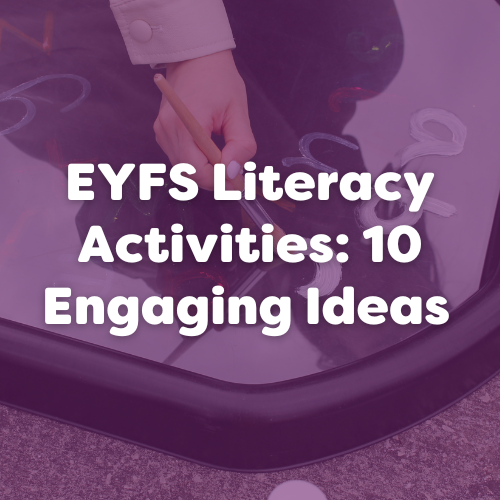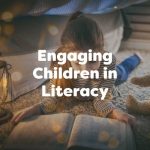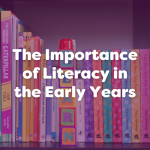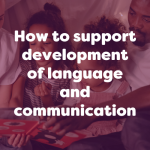The Early Years Foundation Stage, or EYFS, covers children’s education between the ages of 0 and 5. It is therefore a crucial stage in any child’s development. The EYFS is split into 7 key areas of learning, Personal, Social and Emotional Development (PSED), Physical Development, Literacy, Maths, Understanding the World, Expressive Arts and Design and Communication and Language. In this blog we delve specifically in the latter area and suggest 10 different EYFS Literacy activities to promote literacy in the early years. These activities have been suggested to support early development whilst also providing your children with a fun activity that doesn’t feel like learning!
1. Alphabet Treasure Hunt
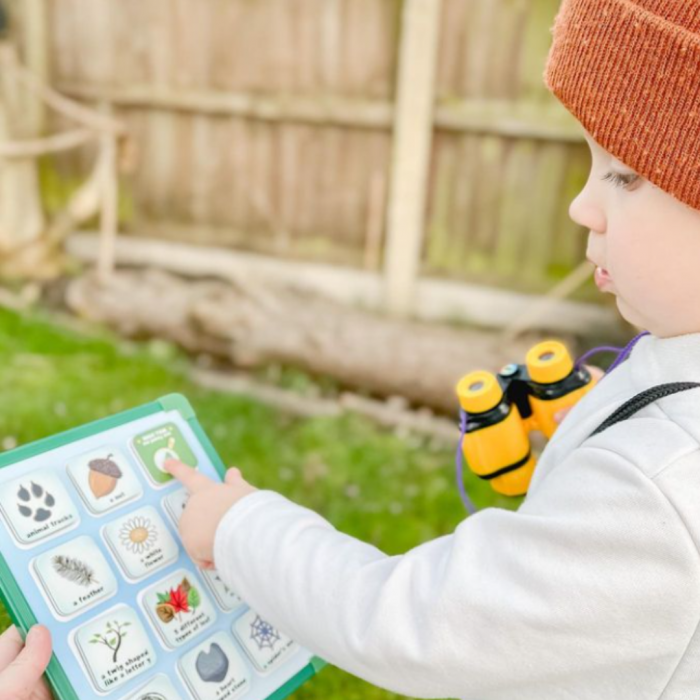
Our first activity is one that requires no resources and can be done indoors or outdoors. Simply task your little ones with finding objects in their environment that start with each letter of the alphabet, starting at A and ending at Z.
This scavenger hunt is a great way for children to familiarise themselves with the letters of the alphabet and words that start with each different letter. Depending on your child’s development, why not build upon this activity by providing a print out of the alphabet and have your children write out each object they find that corresponds to the letter. This will further benefit your children as they learn to spell potentially new objects, discover new words and possibly introduce new sounds and phonics.
2. Storytelling Puppet Show
Puppets can be used to great effect in literacy and language development. Why not encourage your little ones to use puppets alongside story time to act out the story being told. Story sacks and story sets are a great resource for this as the puppets and characters are selected to match those in the story, however why not use something as simple as a sock and a bit of imagination?
By acting out the stories they are being told, children will develop a deeper understanding of the story and will be prompted to ask questions and also embellish the tale, supporting language skills.
Another way to use puppets is to encourage children to come up with a story of their own to act out. This is a great way to test their creative thinking as well as language skills, storytelling skills and communication.
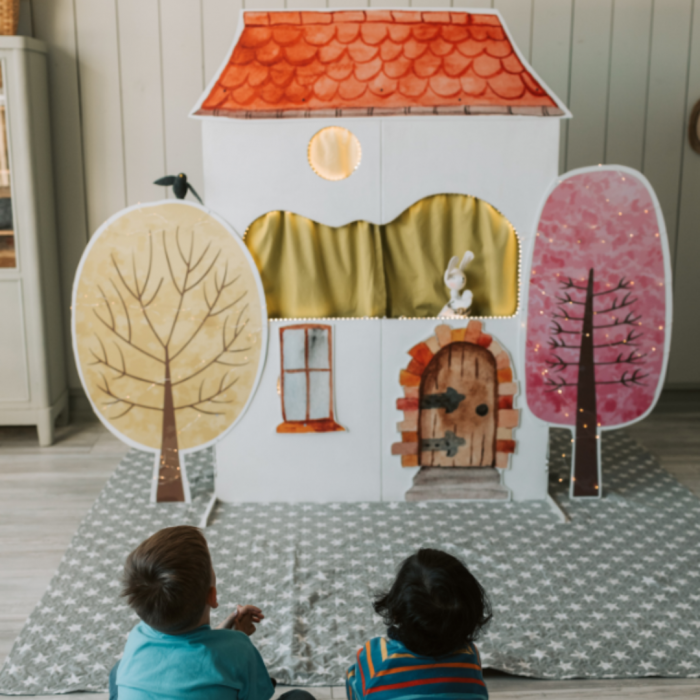
3. Tracing Letters
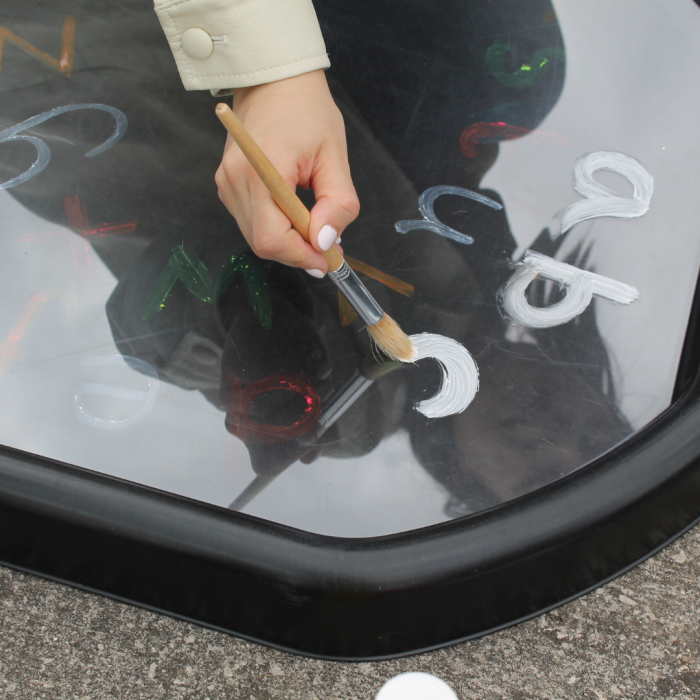
Tracing is a great way to support letter recognition and formation. For this activity we used a tuff tray, some paints and an acrylic tuff tray matt. Start by writing the letters directly onto the tuff tray in paint. Then add your acrylic mat on top and your little ones can trace over the letter with paint pens or a paintbrush. Another great resource to use for tracing letters is our letter tracing boards!
Mistakes can easily be wiped away and the letters can be practiced over and over again. This activity supports fine motor skills and develops the muscle memory necessary for independent writing.
Once your child is confident with tracing, try and develop this activity by having children write the letters independently, copying from letters in front of them. A great place to do this is in a sandpit where errors can be wiped away and restarted over and over again
4. Conversation Cubes
Improve speaking, listening and general communication with this next activity. Using conversation cubes, encourage children to take it in turn rolling their cube and start a conversation using the prompt on the cube.
For children who aren’t confident with communication and language, this is a great way to get them familiar with it and for those who are more comfortable with the activity, why not encourage to expand on the prompts on the cubes and use these as a jumping off point only.
These cubes come ready made with 36 different questions but why not make your own? Using a resource like our pocket dice you can add your own prompts for children – this could even be designed to discuss key curricular topics.
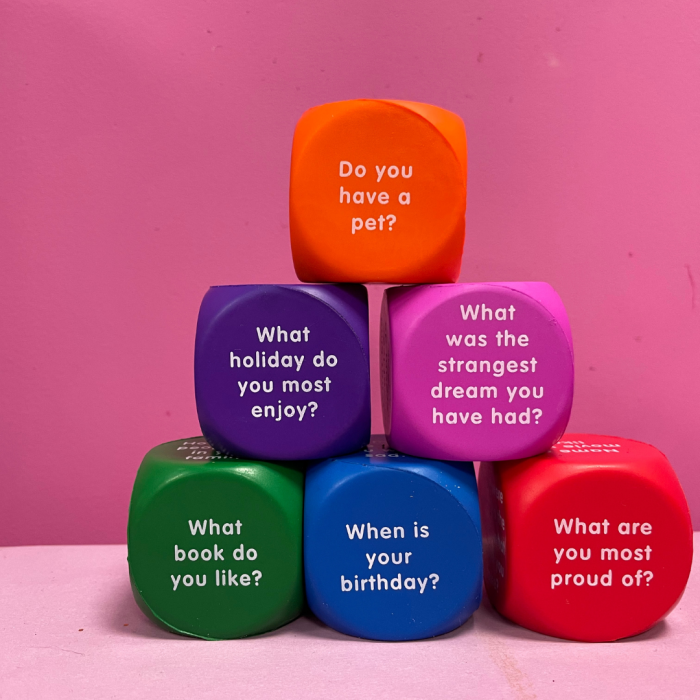
5. CVC Word Puzzles
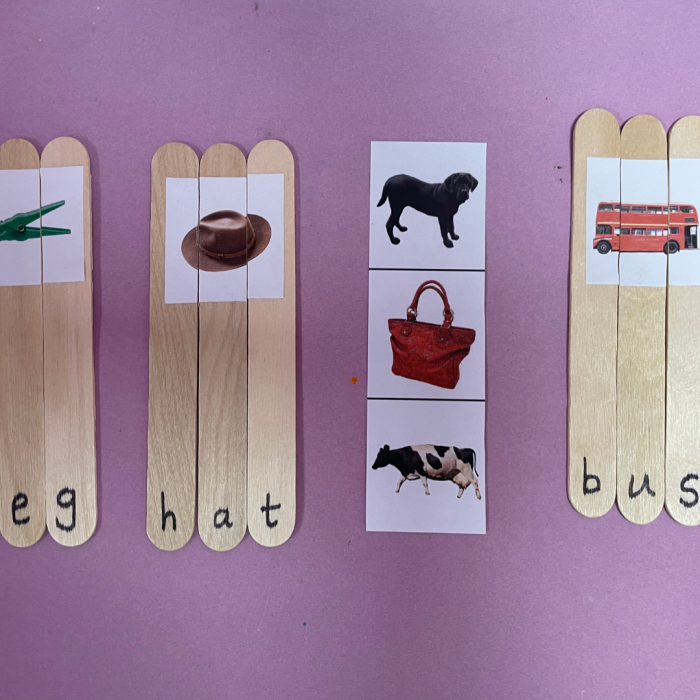
Our CVC Word builder activity is a fantastic way for children to practice spelling and phonics with a bit of extra help from the images. Simply download our CVC sheets, cut out the images and add them to some lolly sticks with the corresponding letters underneath. Once you have done this for all the words and images, mix up your pile of lolly sticks. Your children will need to hunt the correct lollysticks to build the CVC word.
6. Silly Sentence Building
This activity is a guaranteed crowd pleaser in your setting. Simply give your children a set of words and challenge them to make the silliest sentence they can. This will help to encourage creativity in language use and support a better understanding of sentence structure. For this you could use a sentence builder flip book or magnetic sentence builder OR our FREE downloadable silly sentence chatterbox.
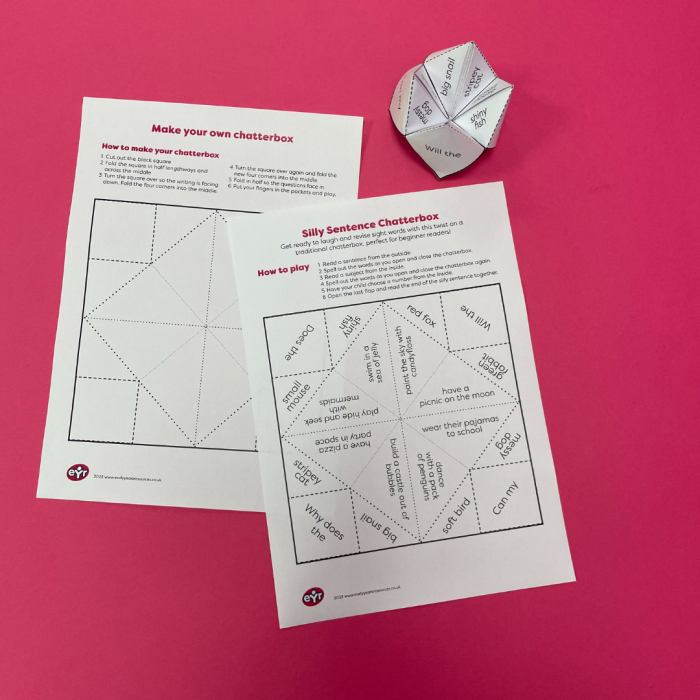
7. Sound Bingo
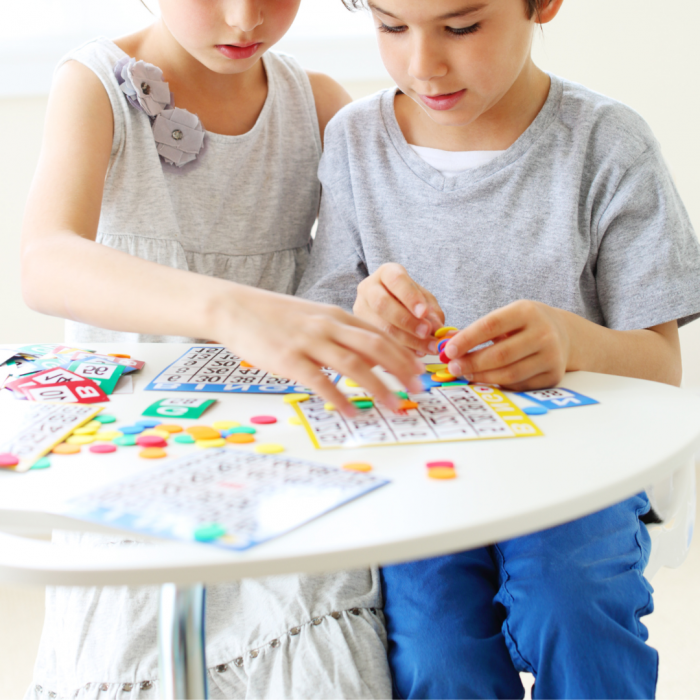
A great way to develop children’s understanding of different words and the sounds they make is with this Sound Bingo activity.
For this you will need to create bingo sheets with various words – these can be adjusted depending on your child’s level of development and learning. Then start reading out various words – children will need to mark off the words on their sheet that sound like the ones you have said – once they get all of their words crossed off then it’s time to shout BINGO!
Children will need to practice the words in their head or out loud to see if they match the sounds of the words being called out. This will support overall understanding of sounds and the words associated with them
8. Rhyming Eye-Spy
Eye-Spy is a well-known and much loved game amongst most children. Why not elevate the traditional game by prompting children instead to look for objects and things that rhyme with the one mentioned. This would go something like this:
“I spy with my little eye, something that rhymes with cat”
Then your child will need to search for a rhyming object in their environment. Not only is this a fun extension to the well-known game but it also supports recognition of different words and builds associations with words, objects and their sounds.
Again, this activity requires no resources and can be played anywhere!
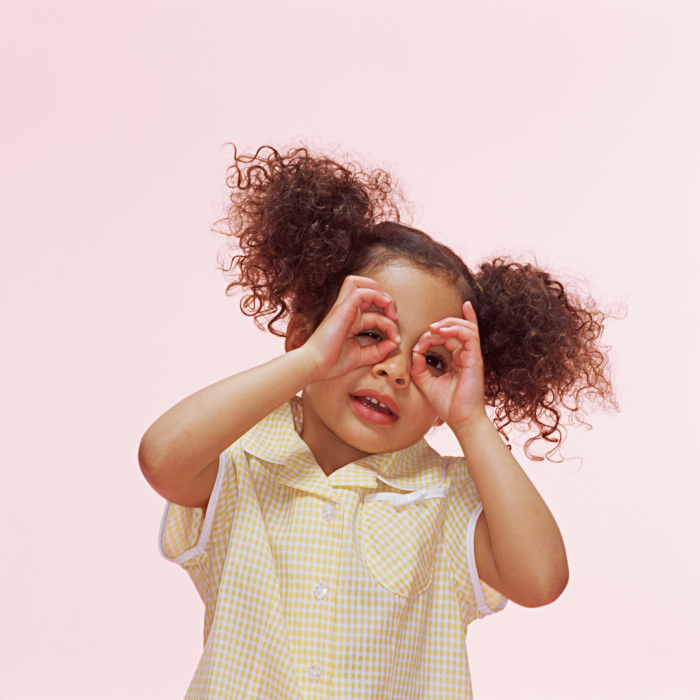
9. Really Random Story Bags
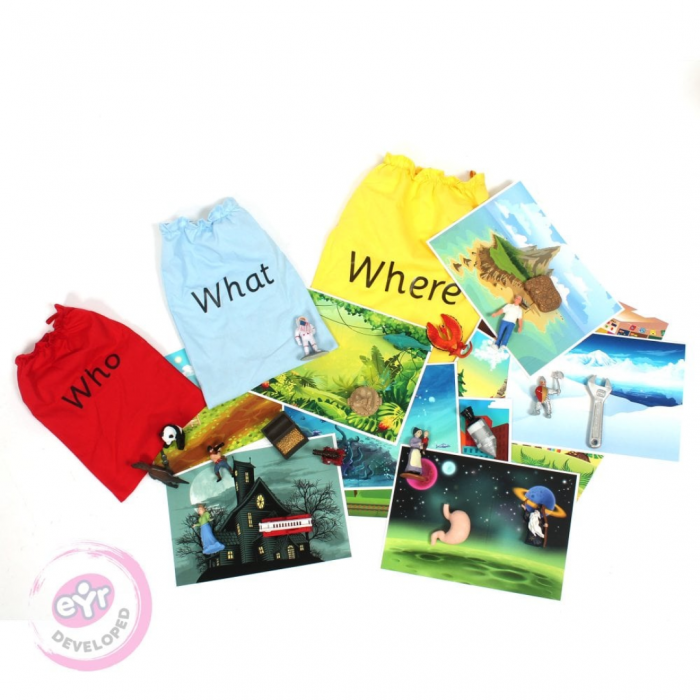
Similar to the silly sentence builder – this activity is guaranteed to spark creativity and inject a bit of fun into learning. For this you will need three bags – one with location images or names, a second with objects and a third with characters.
The task is for children to pick an item from each of the bags and create a story around these objects, characters and locations. This will prompt children to think creatively when faced with completely random and open ended objects.
Check out our specially created Really Random Story Bags and see what craziness your little ones can come up with – feel free to supplement these bags with items related to key topics you want to cover. Examples could be around space, history or even diversity.
10. Whacky Word Building
Using something like alphabet pebbles, bury random letters in sand and task children with uncovering them. Once they a few letters – challenge them to create whacky words and see if they can figure out how they should sound. How many crazy new words can they create?
This is a fantastic way for children to practice different sounds and explore what sounds different letters make individually and when put together. It will test their knowledge as they sound out nonexistent words as opposed to words they are familiar with.
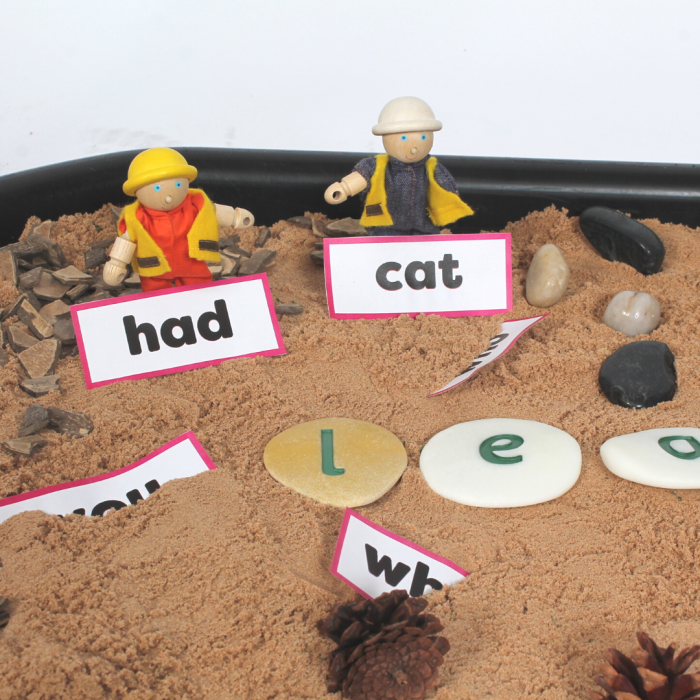
We would love to know which of these EYFS Literacy Activities you tried! Let us know by tagging us in your posts on Facebook or Instagram and let us know if you have more ideas!


